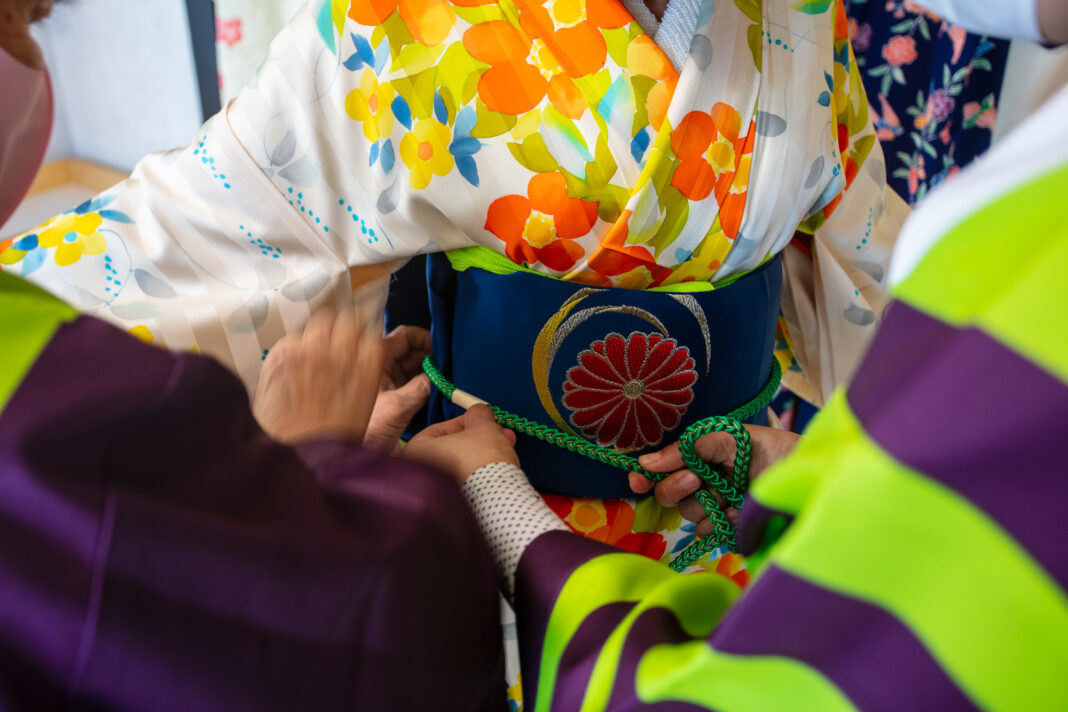Sushi/nigiri and kimono are likely the two features of Japanese culture that are best known by international audiences. One is a feast for the stomach and the other for the eyes. What if you could experience both at the same time?
The atmospheric Miyoshi Restaurant located in Susono City in Shizuoka Prefecture offers a nigiri/sushi making experience while dressed in traditional kimono in a very welcoming environment in the company of the restaurant owners. Needless to say, the experience also involves eating the delicious sushi prepared under the guidance of the masters. And for those looking for something more, there is the option of matching your sushi with delicious sake, a Japanese alcoholic drink prepared by fermenting rice.
Table of Contents
Miyoshi Restaurant in Susono of Shizuoka Prefecture
Within a mere ten minutes of Iwanami Station is Miyoshi, where I am greeted by a mother and daughter duo with big inviting smiles on their faces. While I took the taxi today, the restaurant offers a free pick-up and drop-up service from the station.
Our three-hour long program will start by picking the kimono and obi – the decorative belt – that the two masters will help us put on. Once dressed in our kimonos, we will then prepare our own sushi and enjoy a long leisurely lunch. We will then have the opportunity to have our photos taken, all dressed up in the kimono, at various photo spots around the restaurant premises.
While the experience offers the unique opportunity to combine two beloved aspects of Japanese culture, kimono and the art of sushi making, I can sense that what will make it even more special is the two masters who will guide us through the experience of wearing a kimono and making sushi. Right from the beginning, in the company of the mother and daughter duo, I feel like I am surrounded by family. There is a heartwarming coziness in the air. It feels as if, while giggling and chatting, we are all together getting ready for a celebratory event.
Pick Any Kimono You Like
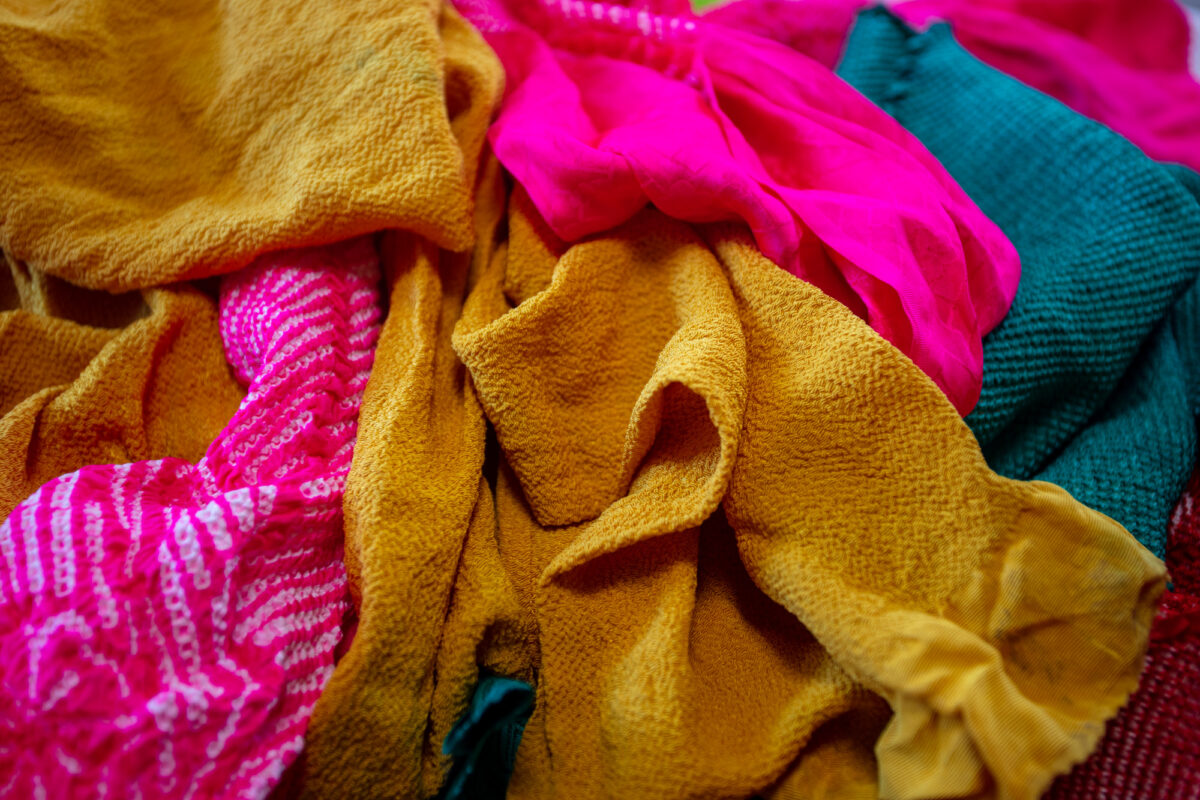
After a brief discussion on the content of our program today, I am soon guided to one of the large back rooms of the restaurant where a large selection of kimonos each featuring a different yet equally captivating pattern and color awaits us. Visitors are free to choose any of the kimonos on display. The colors of the kimonos on display look and feel particularly bright and cheerful – matching the spirit of my hosts. The kimono featuring flower patterns on a beige background looks very classy yet colorful. We match it with a dark blue obi to create a color contrast to make each component stand out on its own.
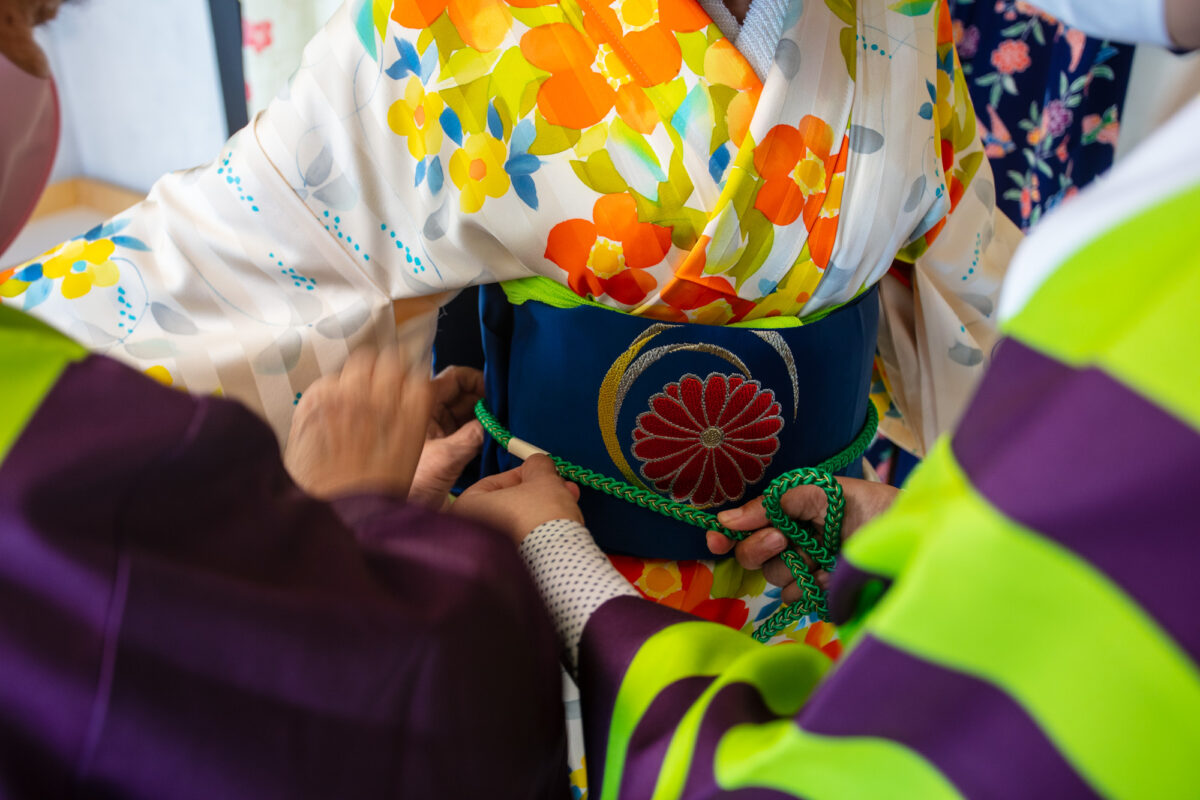
We are now ready to get dressed in the kimono. One can never truly appreciate the efforts that go into wearing a kimono without personally experiencing the process. While the two masterful ladies make the whole process feel smooth and easy, this is a process that requires experience that comes from years of practice.
The Admirable Effort Beyond Kimono Dressing
What makes the kimono wearing process a more technical task than regular clothing is the layers that go underneath and over it. While the three main components of a kimono that are visible from the outside are the obi, the specific belt worn with kimono, tabi, the socks worn under kimono, and the kimono itself, the garments worn underneath it are equally as important.
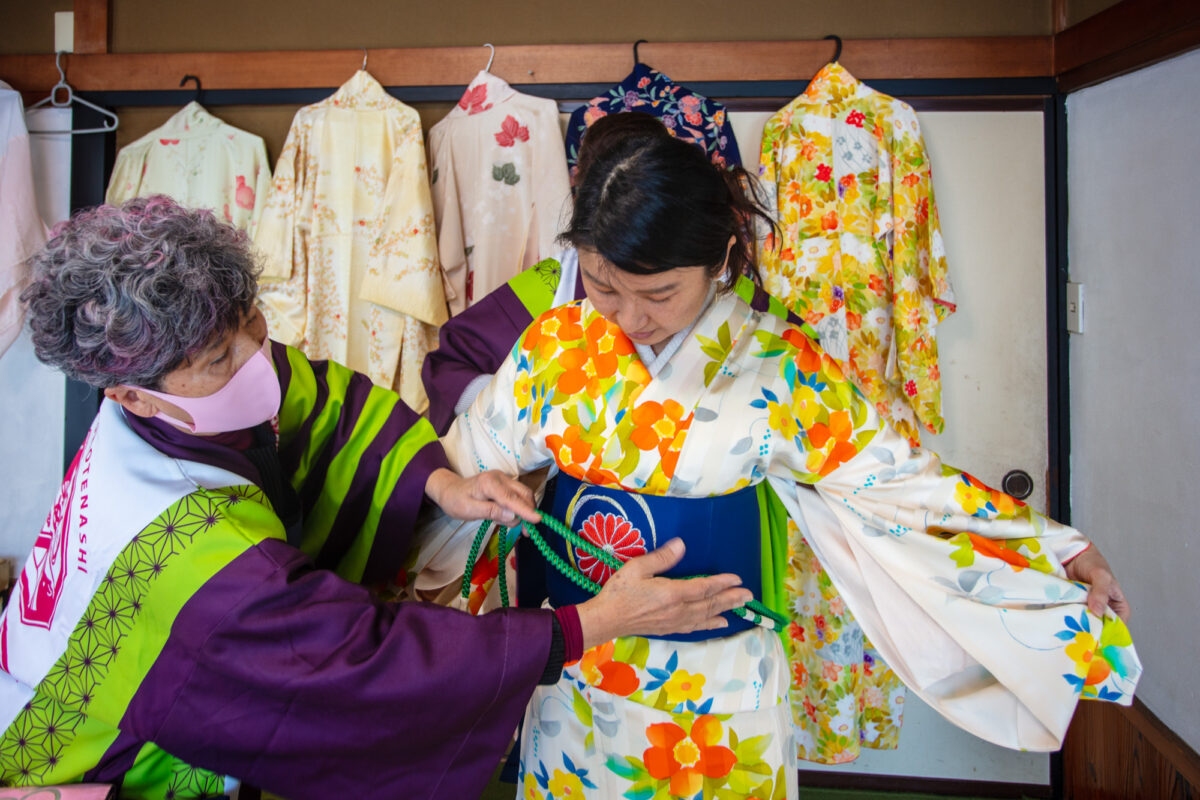
Hadajuban is the robe worn under the kimono. It can come either as one piece or two top and bottom pieces. The hadajuban helps to eliminate the direct contact between the skin and the fabric of the kimono to keep the fabric fresh and clean. Datejime is another garment, invisible from the outside, that is put on to secure the hadajuban.
Being dressed by two kimono masters is a special and truly pampering experience. With all the attention focused on the person getting dressed, one feels like they’re getting ready for their own wedding. Once the underlying garments are put on, followed by the kimono, the more difficult task of putting on the obi begins. The obi does not have any fastenings, so it needs to be tied in a bow or another form of knot to be worn. Today, we are in good hands and this final process is completed in no time.
Make and Eat Your Own Sushi
Once dressed in a kimono and feeling particularly stylish, we move to the next room where we will use the pre-cooked and seasoned rice and raw fish to make our own nigiri/sushi. This process, under the guidance of the master, involves shaping the pre-cooked rice, adding wasabi (as a fan of spiciness, I may have been a little too generous), and then assembling it with the already cut raw fish.
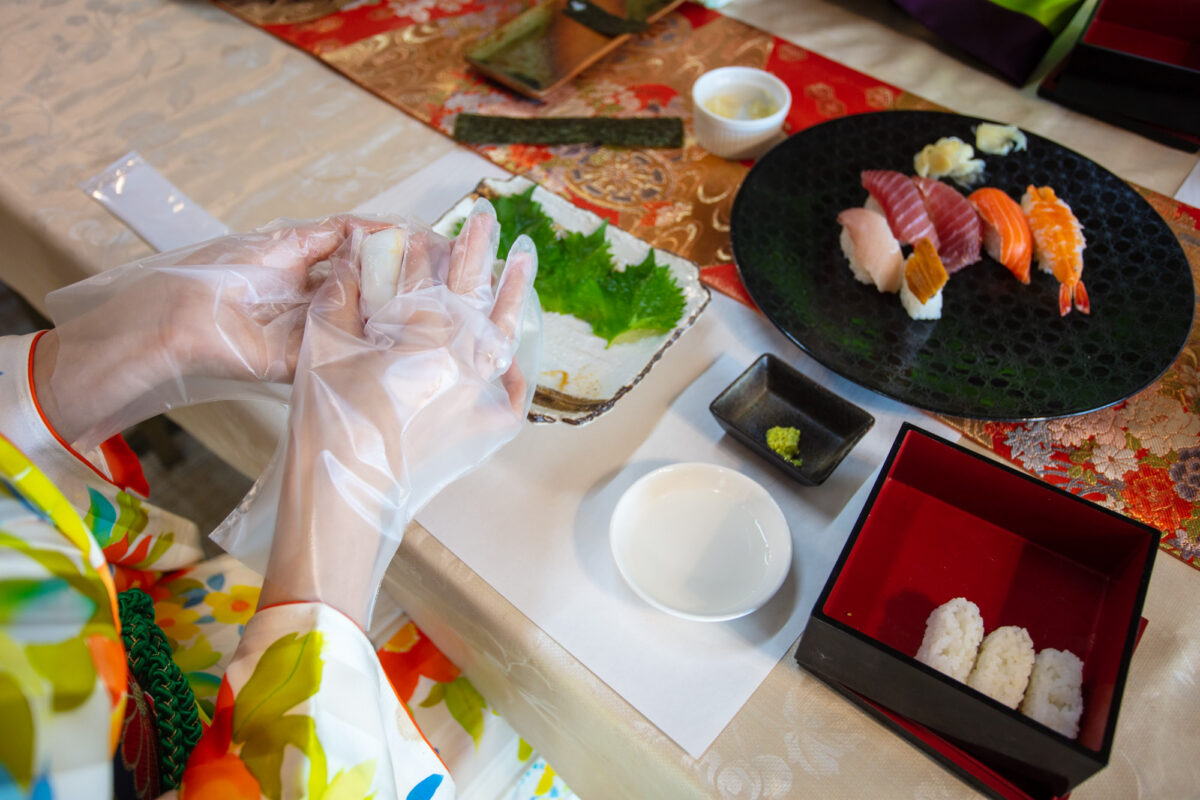
There are many available ingredients that, fortunately, also include my favorites – salmon and tuna fish. In addition to the nigiri, we also roll some sushi using seaweed. The main difference between nigiri (raw fish put on top of vinegared rice) and the gunkan-maki sushi is the seaweed that is used to roll the rice and fish into. While I enjoy raw fish almost daily in Japan, either in the form of sashimi, nigiri or sushi, this is the first time that I get to prepare it for myself.
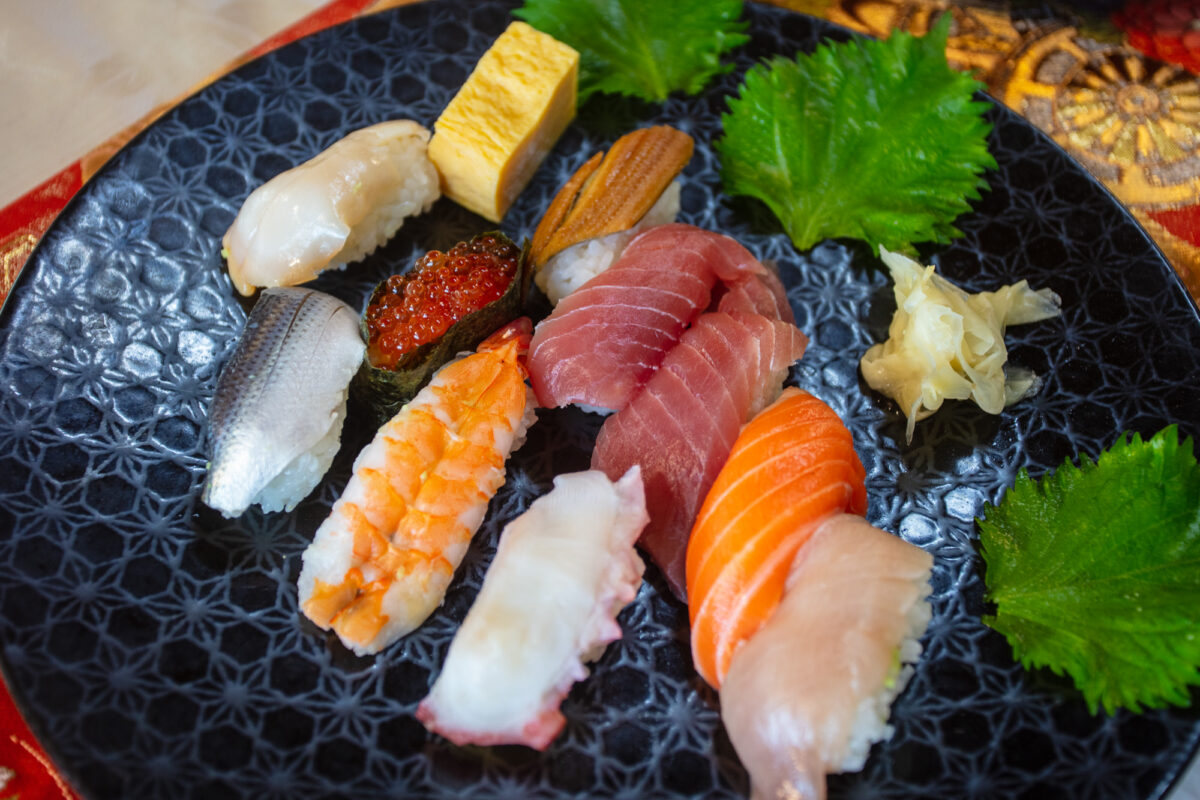
Again, as we are like a family, we giggle and chat while each preparing our own sushi. I must admit that – thanks to the help I got from the master – my lunch set tastes particularly good. Instead of sake, today we are enjoying hot tea alongside our sushi. But I would love to come back another day to taste the sake alongside the sushi. While the generous set of sushi that we prepare is more than enough to feel full, the restaurant also offers delicious tonkatsu sets (breaded, deep-fried pork cutlet) for those who are hungry for additional tastes.
Get Your Photo Taken Dressed in a Kimono
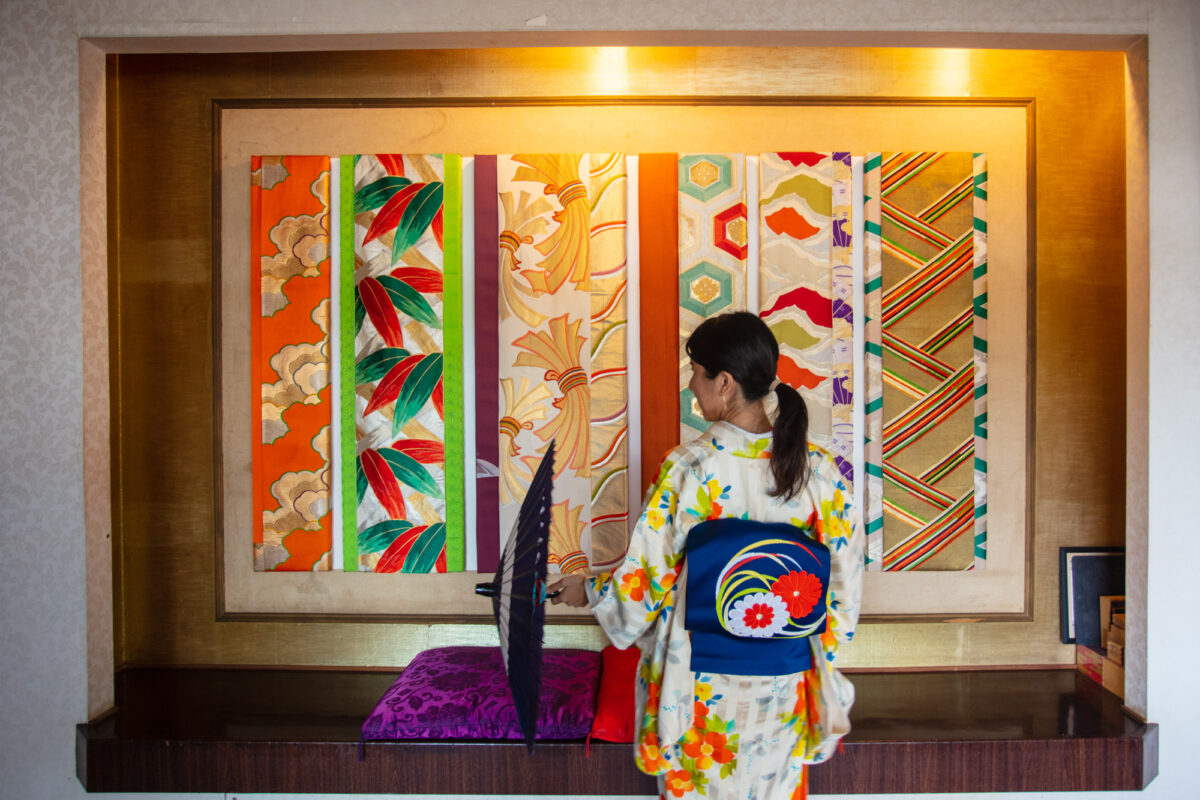
Once we finish our delicious lunch, it is time to take various photos on the large premises of Miyoshi Restaurant. The owner guides us to different sections of the property that make for an ideal spot to showcase our kimonos. To add to the allure of the scenes, she also provides us with umbrellas. Miyoshi Restaurant occupies a large yet atmospheric area. The venue, which can also be booked for memorial or celebratory events, includes many different spots ideal for photography sessions.
3 hours pass by very quickly. Undressing from the kimono takes less time than the dressing phase. Once we are back in our regular clothes, which now feel a little too bland to be honest, we hug the owners and say our goodbyes. It sure feels like saying goodbye to family.
How to Book the Sushi Making and Kimono Wearing Experience
The experience can be booked for any day of the week except for Thursday. Advance notice of five days is required. The facility offers free pick-up and drop-off service from JR Mishima and JR Iwanami Stations. Miyoshi also accommodates any dietary preferences as long as it is communicated two days before the date of the experience. For pricing and booking, please check this link.
How to Get to Miyoshi Restaurant from Tokyo
Tokaido-Sanyo Shinkansen connects Tokyo Station to Mishima Station in 50-minutes. The restaurant offers a free pick up service from the Mishima Station to the facilities.
